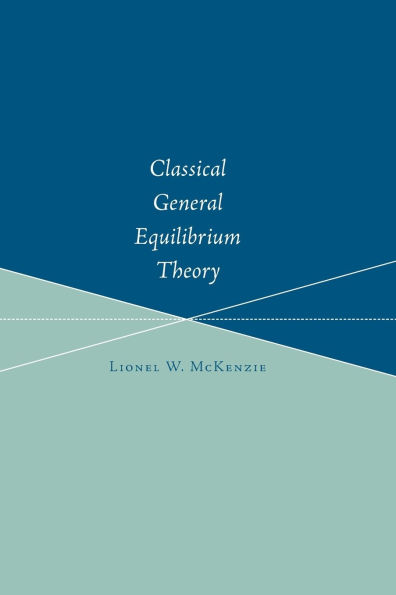Classical General Equilibrium Theory
Although general equilibrium theory originated in the late nineteenth century, modern elaboration and development of the theory began only in the 1930s and 1940s. This book focuses on the version of the theory developed in the second half of the twentieth century, referred to by Lionel McKenzie as the classical general equilibrium theory. McKenzie offers detailed and rigorous treatment of the classical model, giving step-by-step proofs of the basic theorems. In many cases he elaborates on the individual steps to give a fuller understanding of the underlying principles. His goal is to provide readers with a true mastery of the methodology so that they can derive new results that will further enrich their thinking about general equilibrium theory. Special attention is given to the McKenzie model, in which it is not assumed that the number of firms is given but rather that technologies or activities are available to any agents who can supply the resources they require. The McKenzie model is used to establish the turnpike theorems of optimal and competitive capital accumulation.
1100658123
Classical General Equilibrium Theory
Although general equilibrium theory originated in the late nineteenth century, modern elaboration and development of the theory began only in the 1930s and 1940s. This book focuses on the version of the theory developed in the second half of the twentieth century, referred to by Lionel McKenzie as the classical general equilibrium theory. McKenzie offers detailed and rigorous treatment of the classical model, giving step-by-step proofs of the basic theorems. In many cases he elaborates on the individual steps to give a fuller understanding of the underlying principles. His goal is to provide readers with a true mastery of the methodology so that they can derive new results that will further enrich their thinking about general equilibrium theory. Special attention is given to the McKenzie model, in which it is not assumed that the number of firms is given but rather that technologies or activities are available to any agents who can supply the resources they require. The McKenzie model is used to establish the turnpike theorems of optimal and competitive capital accumulation.
50.0
Out Of Stock
5
1

Classical General Equilibrium Theory
332
Classical General Equilibrium Theory
332
50.0
Out Of Stock

Product Details
| ISBN-13: | 9780262633307 |
|---|---|
| Publisher: | MIT Press |
| Publication date: | 08/12/2005 |
| Series: | The MIT Press |
| Edition description: | Revised ed. |
| Pages: | 332 |
| Product dimensions: | 6.00(w) x 9.00(h) x 0.60(d) |
| Age Range: | 18 Years |
About the Author
What People are Saying About This
From the B&N Reads Blog
